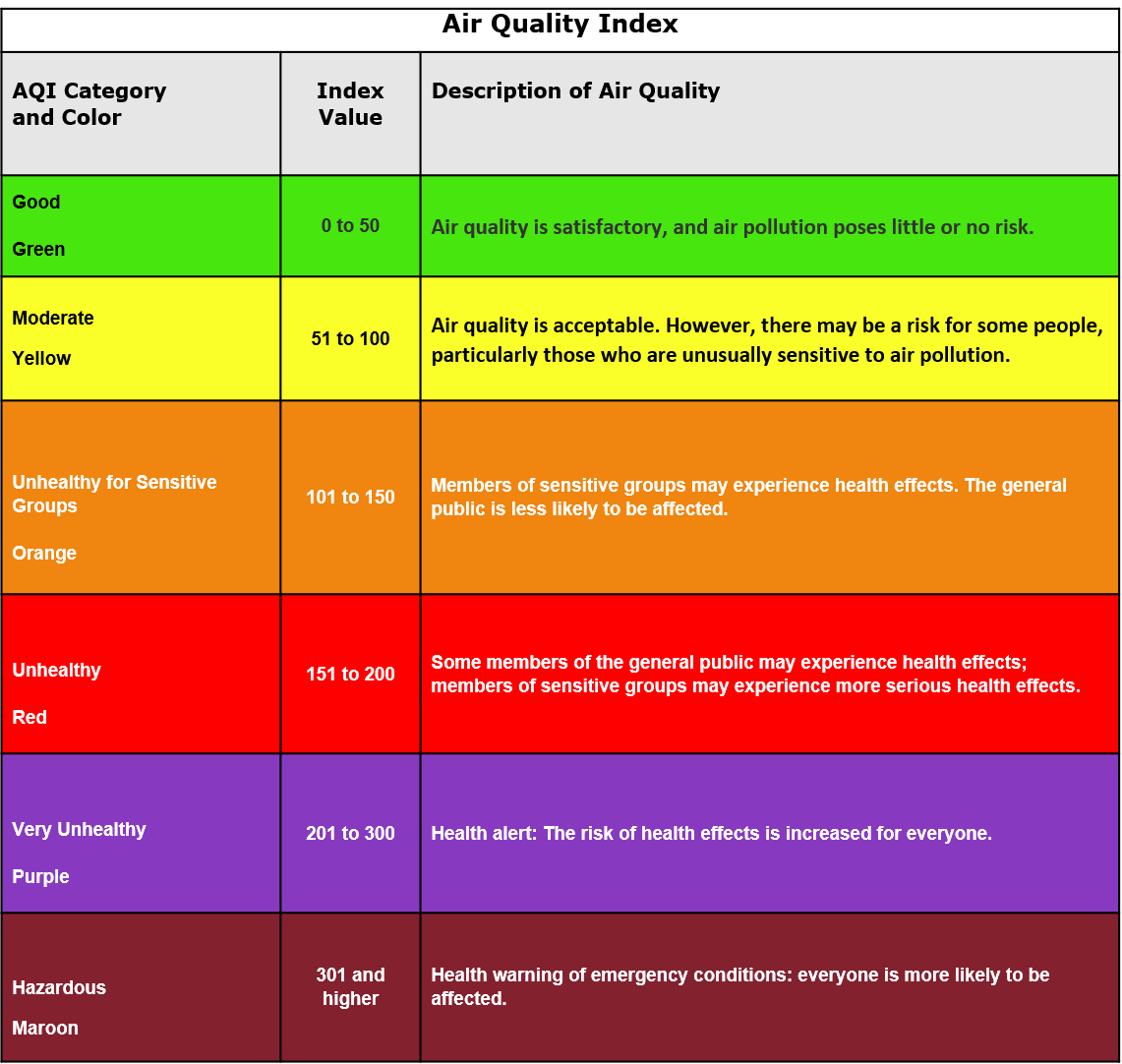Current Air Quality Table
Particulate Matter (smoke) monitoring is only available at the Anderson and Redding monitoring stations. The Shasta Lake stations monitor for ozone pollution only. Ozone pollution is different than smoke.
The table you see below identifies the permanent, official, air monitoring stations in the Shasta County.
Smoke vs Ozone
Not all air monitoring stations monitor for particulate matter (smoke). In Shasta County, the Anderson and Redding stations are the only station monitoring for particulate matter (smoke). The Shasta Lake site only monitor for Ozone pollution which is not related to smoke from wildfires. This is why you may see good air quality being indicated for Shasta Lake when there may be smoke present.
Additional Monitors
Additionally, the air district has deployed experimental particulate matter (smoke) sensors throughout Shasta County. These sensors are not official monitors but can be used to help gauge smoke levels in particular locations. When accessing this data, it is advisable to switch the Map Data Layer dialogue box in the lower left hand corner from “None” to “AQ and U”. This will apply a correction factor that will make the readings relate more closely to the official air quality data. They can be accessed at: Purple Air
What is the U.S. Air Quality Index (AQI)?
The U.S. AQI is EPA’s index for reporting air quality.
How does the AQI work?
Think of the AQI as a yardstick that runs from 0 to 500. The higher the AQI value, the greater the level of air pollution and the greater the health concern. For example, an AQI value of 50 or below represents good air quality, while an AQI value over 300 represents hazardous air quality.
For each pollutant an AQI value of 100 generally corresponds to an ambient air concentration that equals the level of the short-term national ambient air quality standard for protection of public health. AQI values at or below 100 are generally thought of as satisfactory. When AQI values are above 100, air quality is unhealthy: at first for certain sensitive groups of people, then for everyone as AQI values get higher.
The AQI is divided into six categories. Each category corresponds to a different level of health concern. Each category also has a specific color. The color makes it easy for people to quickly determine whether air quality is reaching unhealthy levels in their communities.

